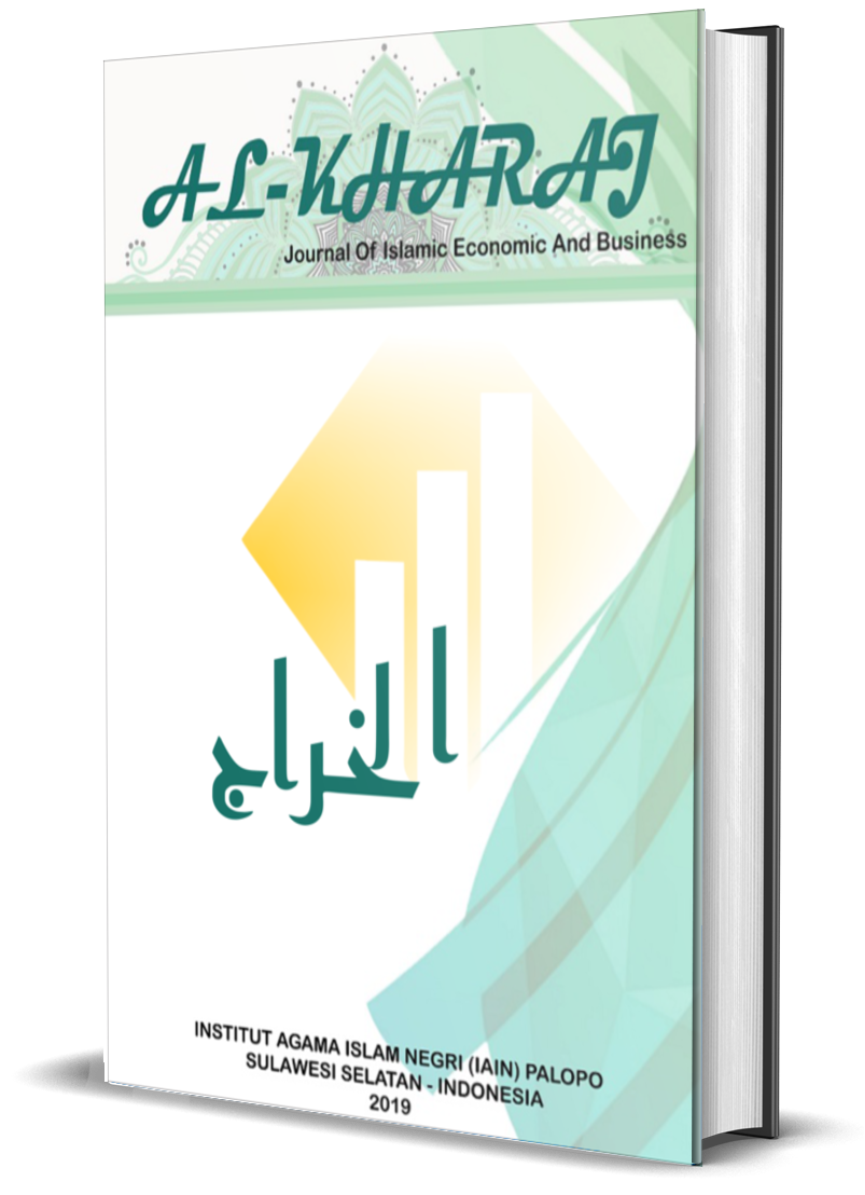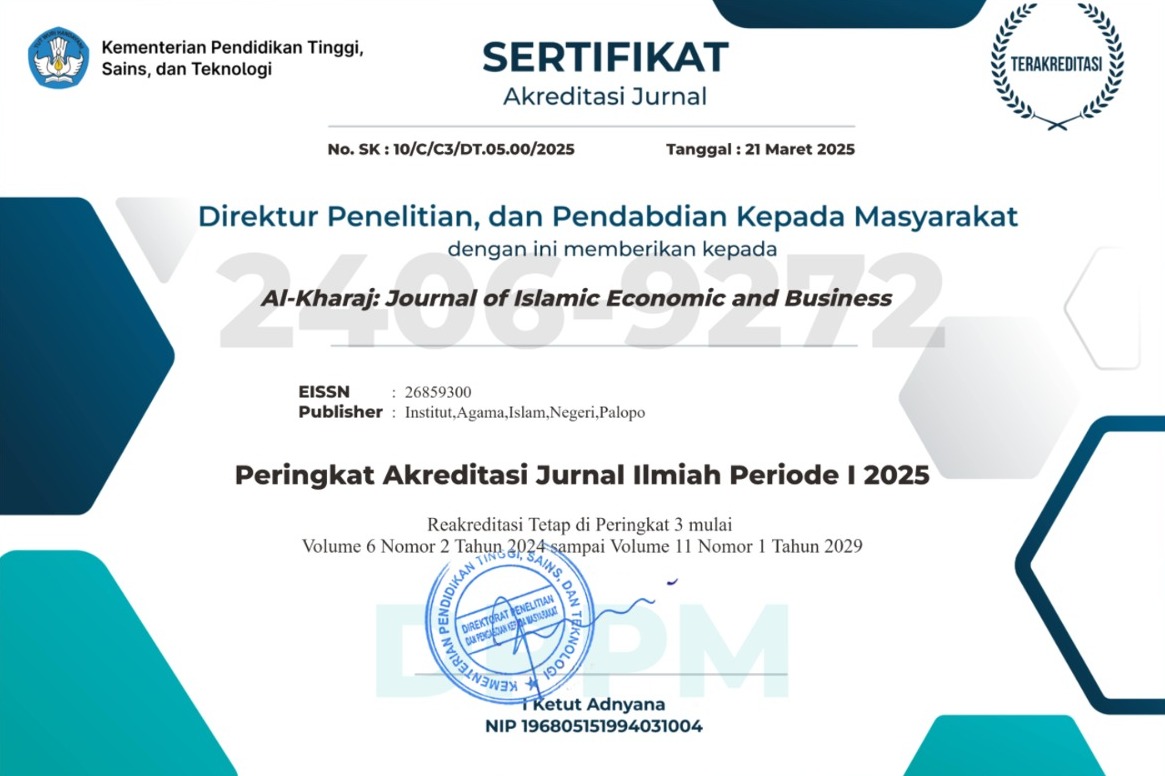Analysis of the Relationship between Job Satisfaction and Employee Performance at the Sudiang Samsat Office, Makassar City
DOI:
https://doi.org/10.24256/kharaj.v7i3.7710Keywords:
Job Satisfaction, Employee Performance, and Samsat Services.Abstract
This study aims to analyze the relationship between job satisfaction and employee performance. This study uses a quantitative approach with an explanatory type. The study population was all 55 Samsat Sudiang employees who were also sampled through census techniques. Data collection was carried out through observation, interviews, and questionnaires. Data analysis techniques used Crosstab and Kendall's Rank. The results of the study indicate that there is a positive and significant relationship between job satisfaction and employee performance, with a Kendall's Tau correlation coefficient of 0.671 and a significance of 0.000. The Z test produced a value of 7.234 > 1.96, which strengthens the evidence of the significance of the relationship. The coefficient of determination of 45% indicates that job satisfaction contributes 45% to the variation in employee performance, while the other 55% is influenced by other external factors. This finding implies that efforts to improve employee performance need to be preceded by increasing job satisfaction through improvements in the compensation system, work environment, and relationships between superiors and subordinates. This study provides recommendations for strengthening internal policies based on welfare and developing employee capacity on an ongoing basis.
References
Adams, J. S. (2019). Inequity in social exchange. In L. Berkowitz (Ed.), Advances in Experimental Social Psychology (Vol. 2, pp. 267–299). Academic Press.
Armstrong, M. (2023). Armstrong's Handbook of Performance Management: An Evidence-Based Guide (6th ed.). Kogan Page.
Astuti, RN, & Handayani, SR (2021). The influence of job satisfaction on employee performance at PT. XYZ. Journal of Management and Business Research (JRMB), 16(2), 120–130.https://doi.org/10.23969/jrmb.v16i2.3451
Bernardin, H. J., & Russell, J. E. A. (2022). Human Resource Management: An Experiential Approach (8th ed.). McGraw-Hill Education.
Cahyani, A., & Wibowo, A. (2023). Job satisfaction as a mediator between work motivation and employee performance. Journal of Administrative Sciences, 20(1), 55–68.
Çelik, M., & Oral, A.Y. (2023). The mediating role of job satisfaction in the effect of organizational support on job performance. Journal of Management and Organization, 29(1), 105–122.https://doi.org/10.1017/jmo.2021.57.
Dewi, LN, & Rahmawati, Y. (2022). Analysis of the influence of job satisfaction on the performance of employees of the Makassar City Social Service. Journal of Public Administration and Policy, 7(1), 88–97.
Fauziah, N., & Hidayat, T. (2021). The relationship between job satisfaction and employee work productivity. Jurnal Psikologi Ulayat, 8(2), 143–152.
Febrianti, L., & Hasanuddin, A. (2023). Analysis of job satisfaction factors on the performance of public service sector employees. Indonesian Journal of Public Administration, 13(2), 87–95. https://doi.org/10.31227/japi.v13i2.2023.
Gibson, J. L., Ivancevich, J. M., & Donnelly, J. H. (2020). Organizations: Behavior, Structure, Processes (14th ed.). McGraw-Hill Education.
Gupta, M., & Shaheen, M. (2022). Impact of job satisfaction on job performance: Mediating role of motivation. International Journal of Productivity and Performance Management, 71(5), 1120–1136.https://doi.org/10.1108/IJPPM-07-2020-0387.
Grimmelikhuijsen, S., Jilke, S., Olsen, A.L., & Tummers, L. (2020). Behavioral public administration: Combining insights from public administration and psychology. Public Administration Review, 80(1), 45–52. https://doi.org/10.1111/puar.13173.
Haris, A., & Mukhtar, D. (2020). The effect of compensation and job satisfaction on employee performance. Indonesian Journal of Management and Business, 6(1), 41–52.
Herzberg, F. (2019). One more time: How do you motivate employees? Harvard Business Review, 46(1), 53–62.
Jena, L. K., & Pradhan, S. (2020). Workplace spirituality and employee performance. Journal of Workplace Behavioral Health, 35(1), 33–55.https://doi.org/10.1080/15555240.2020.1684300.
Judge, TA, Thoresen, CJ, Bono, JE, & Patton, GK (2020). The job satisfaction–job performance relationship: A qualitative and quantitative review. Psychological Bulletin, 127(3), 376–407. https://doi.org/10.1037/0033-2909.127.3.376.
Karatepe, O.M., & Olugbade, O.A. (2021). The effects of job satisfaction on frontline employees' job performance. The Service Industries Journal, 41(9–10), 638–661.https://doi.org/10.1080/02642069.2021.1895813.
Kim, TY, Hon, AHY, & Crant, J.M. (2021). Proactive personality, employee creativity, and newcomer outcomes. Personnel Psychology, 74(1), 45–69.https://doi.org/10.1111/peps.12366.
Lee, Y., & Kim, S. (2020). Effects of job satisfaction on organizational commitment and performance. Public Personnel Management, 49(1), 1–25.https://doi.org/10.1177/0091026019851193.
Luthans, F. (2021). Organizational Behavior: An Evidence-Based Approach (14th ed.). McGraw-Hill Education.
Mahmood, M., & Zaman, A.U. (2021). Human resource practices and employee performance. Employee Relations, 43(2), 459–478.https://doi.org/10.1108/ER-11-2019-0441.
Mangkunegara, AAAP (2022). Corporate Human Resource Management. Rosdakarya Youth.
Mathis, R.L., & Jackson, J.H. (2022). Human Resource Management (15th ed.). Cengage Learning.
Rahayu, T., & Permana, H. (2023). Analysis of job satisfaction on employee performance at PT. Angkasa Raya. Journal of Economics & Management, 18(1), 89–97.
Rahman, M., & Kamal, MM (2021). The impact of job satisfaction on employee performance: A study on public sector employees. Journal of Management Studies, 5(1), 112–126. https://doi.org/10.2139/ssrn.3810728
Maulana, A., & Sari, DP (2022). The effect of job satisfaction on the performance of state-owned enterprise employees. Journal of Economics and Business, 9(2), 67–75.
Robbins, S.P., & Judge, T.A. (2021). Organizational Behavior (18th ed.). Pearson Education.
Schermerhorn, J.R. (2021). Exploring Management (6th ed.). Wiley.
Vroom, V. H. (2019). Work and motivation. John Wiley and Sons, New York.
Wibowo. (2020). Performance Management (5th ed.). RajaGrafindo Persada.
Widodo, H., & Lestari, D. (2022). Perceptions of organizational justice and its influence on employee performance. Journal of Applied Management Science, 10(1), 21–30.https://doi.org/10.32722/jimt.v10i1.2022.
Widya, S., & Prasetyo, H. (2021). Job satisfaction and its influence on civil servant performance. Journal of Public Administration, 12(3), 45–58.
Mujahidin, Rahmadani, N., & Putri, Q. A. R. (2024). Analysis of the Influence of Religiosity Values In Reducing Consumptive Behavior in Indonesian Muslim Consumers. Amwaluna: Jurnal Ekonomi dan Keuangan Syariah, 8(2), 253-274.
Wulandari, S., Irfan, A., Zakaria, N. B., & Mujahidin. (2024). Survey Study on Fraud Prevention Disclosure Measurement at State Islamic Universities in Indonesia. IQTISHODUNA: Jurnal Ekonomi Islam, 13(1), 327–348. https://doi.org/10.54471/iqtishoduna.v13i1.2305
Sapsuha, M. U., Alwi, Z., Sakka, A. R., & Al-Ayyubi, M. S. (2024). Review of Gold Trading Practices on Credit (non-Cash) Based on Hadith. Al-Kharaj: Journal of Islamic Economic and Business, 6(3).
Majid, N. H. A., Omar, A. M., & Busry, L. H., Mujahidin Reviving Waqf In Higher Education Institutions: A Comparative Review Of Selected Countries. European Proceedings of Social and Behavioural Sciences.
Ishak, I., Putri, Q. A. R., & Sarijuddin, P. (2024). Halal Product Assurance at Traditional Markets in Luwu Raya Based on Halal Supply Chain Traceability. Amwaluna: Jurnal Ekonomi dan Keuangan Syariah, 8(2), 224-240.
K, A. ., Astuti, A. R. T. ., & ., Mujahidin. (2024). The Impact of Word of Mouth and Customer Satisfaction on Purchase Decisions: The Role of Maslahah as an Intervening Variable in the Cosmetic Products Industry in Indonesia. Journal of Ecohumanism, 3(7), 1525–1540. https://doi.org/10.62754/joe.v3i7.4307
Arno, A., & Mujahidin, M. (2024). Enhancing Zakat Management: The Role of Monitoring and Evaluation in the Amil Zakat Agency. Jurnal Economia, 20(3), 397-418. doi:https://doi.org/10.21831/economia.v20i3.53521
Amiruddin, R., Abdullah, M. R., & Noor Bakri, A. (2025). The Influence of e-WOM, Fashion Trends, and Income on the Consumption Style of the Muslim Community in Palopo City: A Quantitative Analysis. El-Qist: Journal of Islamic Economics and Business (JIEB), 14(2), 185–205. https://doi.org/10.15642/elqist.2024.14.2.185-204
Meilany, R., Fasiha, F., & Moalla, M. (2025). The Role of Interest as a Mediator in The Relationship of Knowledge and Islamic Financial Inclusion to The Loyalty Costumers of Non-Muslim. IKONOMIKA, 10(1), 1-24.
Fiqran, M., Mujahidin, M., Bakri, A. N., & Abdulrahman, A. J. A. (2024). Motivation for Waqf in Millennials and Generation Z: Highlighting Religiosity, Literacy and Accessibility. IKONOMIKA, 9(2), 309-332.
Putri, Q. A. R., Fasiha, F., & Rasbi, M. (2024). Affiliate marketing and intention to adopt mudarabah: The mediating role of trust in Islamic financial decision-making. JEMA: Jurnal Ilmiah Bidang Akuntansi Dan Manajemen, 21(2), 337–362. https://doi.org/10.31106/jema.v21i2.23381
Downloads
Published
How to Cite
Issue
Section
Citation Check
License
Copyright (c) 2025 Cynthia Ayu Yulianto, Syahrir, Nur Apriyani

This work is licensed under a Creative Commons Attribution-ShareAlike 4.0 International License.
Authors retain copyright and grant the journal right of first publication with the work simultaneously licensed under a Creative Commons Attribution-ShareAlike 4.0 International License. In line with the license, authors are allowed to share and adapt the material. In addition, the material must be given appropriate credit, provided with a link to the license, and indicated if changes were made. If authors remix, transform or build upon the material, authors must distribute their contributions under the same license as the original.









